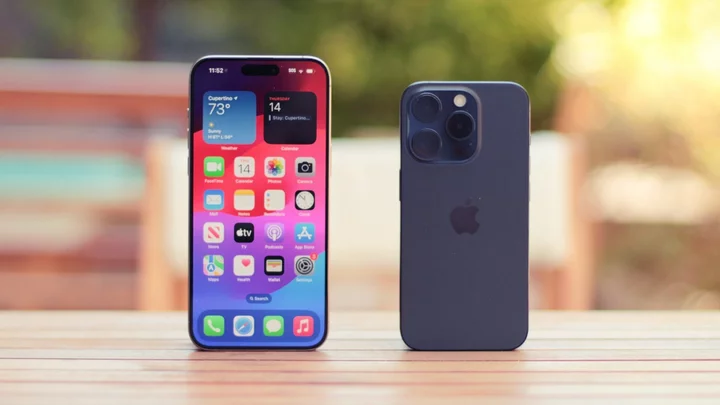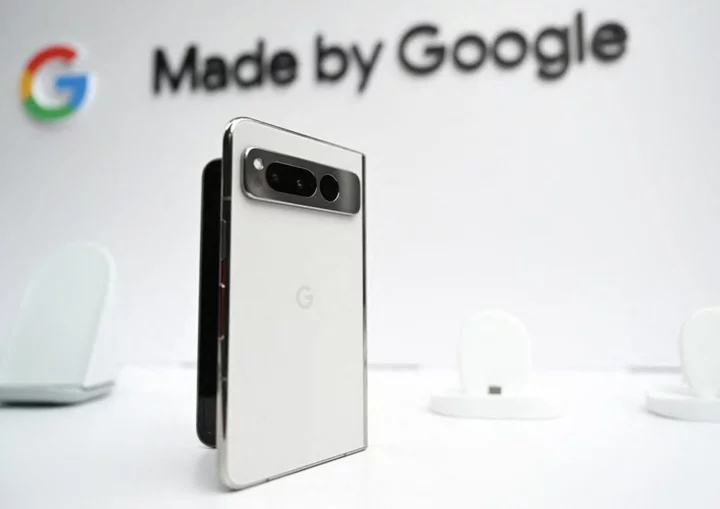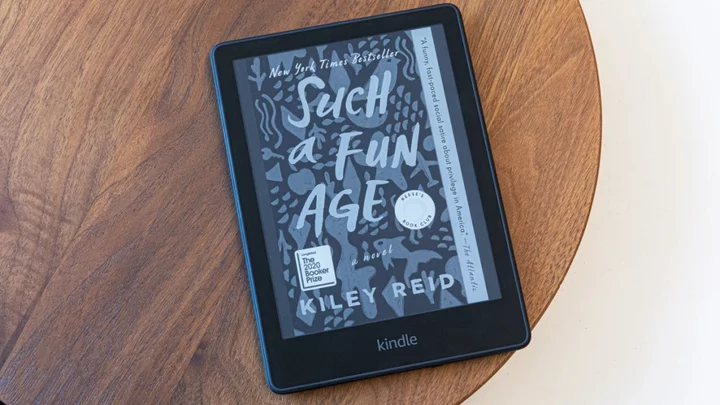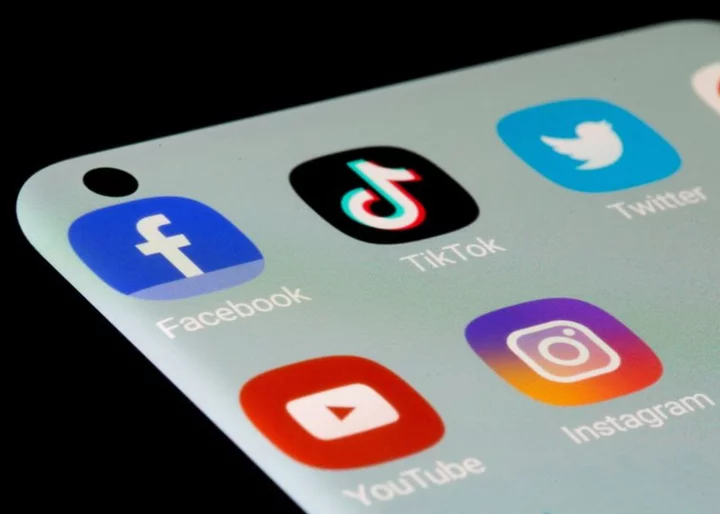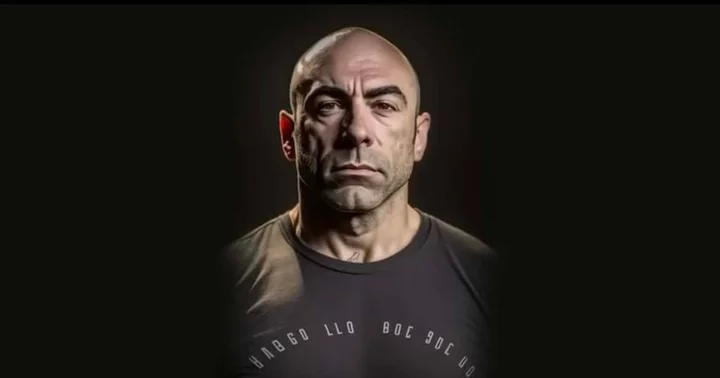Buying a new phone will likely have you thinking about two types of features: On one hand are the details that people around you will notice, such as new design or color. On the other is the stuff that you, the user, will notice.
Apple’s updates of the first variety have over the last couple of years become increasingly subtle. The biggest visual change to the iPhone Pro line was the introduction of the Dynamic Island on the iPhone 14 Pro, which replaced the notch and made Apple’s flagship phones instantly recognisable from the front. On the back, the Pro hasn’t really changed all that much.
On this year’s iPhone 15 Pro and iPhone 15 Pro Max, you won’t find anything that screams “new iPhone” from afar. I’m happy to report, however, that the subtle changes to the 15 Pro’s design are something that you will feel and appreciate as you start using it.
Lighter than ever
Titanium, a strong, durable, but light metal has replaced stainless steel on the iPhone Pro’s chassis. The brushed titanium frame, alongside the textured matte glass on the phone’s back, give it an air of refinement and luxury. It’s much nicer than steel, though it’s not something that people will notice from afar. But here’s what you definitely will notice: These new Pros are light. Very light.
On the left: iPhone 15 Pro Max in natural titanium. On the right: iPhone 15 Pro in blue titanium. Credit: Stan Schroeder/MashableTo be precise, the iPhone 15 Pro weighs 6.60 ounces, while the iPhone 15 Pro Max weighs 7.81 ounces. Compare that to the weight of the iPhone 14 Pro and 14 Pro Max (7.27 and 8.47 ounces). Or you can even compare it to the weight of the first-ever Pro models, the 11 Pro and the 11 Pro Max, which weighed 6.63 and 7.97 ounces. Yes, the iPhone Pro was never this light - even when it was way smaller.
SEE ALSO: Apple's new iPhone 15 is here. Is it worth your money to upgrade?This difference in weight is very noticeable in everyday usage. My daily driver is an iPhone 14 Pro Max and it can get heavy after longer sessions (not to mention the dreaded falling-on-your-face-in-bed incidents). This is even more pronounced when you use a leather case and Apple Wallet with a few cards inside. But Apple is replacing all of its leather accessories with eco-friendly materials, including the new FineWoven case and Wallet. I don’t have official specs for them, but they are quite light, and the overall result is that a fully decked out iPhone 15 Pro is like a featherweight compared to my old phone.
Apple's new FineWoven material has replaced leather on the case and Wallet. Credit: Stan Schroeder/MashableThere are other, subtle differences that make the new phones feel nicer in your hand. Apple reduced the bezels around the displays (which are otherwise the same size as before), making the phones noticeably smaller than last year’s models. The display is ever-so-slightly curved on the edges, feeding into the contoured titanium chassis, which makes the phone feel almost soft when you hold it.
Bye-bye, Lightning
Another new feature that won’t wow your Android-touting friends, but will improve your overall user experience, is the USB-C charging port, which replaced the old Lightning port. Thanks partly to the European Union’s not-so-gentle nudging, Apple finally made the iPhones compatible not only with their own MacBooks and iPads (which have had USB-C for a while now), but also basically every other phone accessory out there.
SEE ALSO: How to preorder the iPhone 15Not only is USB-C more convenient, but it also supports faster data transfer (up to 10 Gb/s, though you do have to use a cable that supports these speeds). A bonus: you can now charge the USB-C AirPods Pro and the Apple Watch by connecting them to your iPhone.
It may not look much, but it's a big change: USB-C has replaced Lightning. Credit: Stan Schroeder/MashableThe old mute toggle switch is also gone on the Pro, replaced by the new Action Button. It is in every way a superior solution, as it’s customizable. You can still set it to toggle sound, but it can be used for other things, such as firing up the flashlight, camera, or a Shortcut of your choosing.
In a very interesting departure from Apple’s typical design language, the Settings menu for the Action Button is animated, flashy, and colourful; perhaps it’s a hint at a wider-reaching UI redesign in the future. My only issue with the Action Button is that it mostly functions in one way: Short press to see the status of the attached command, and long press to activate that command. I’d like to be able to set up multiple gestures, such as double clicks, to perform different functions.
Can we have this design language for other settings as well, please? Credit: Stan Schroeder/MashablePut all of that together, and you get a phone that’s refined in many little ways; it’s lighter, smaller, nicer to hold, more compatible with other devices, and easier to operate. But you do have to hold it in your hand to really appreciate the upgrades.
A phone for gamers
Inside, a lot has changed, but it’s not as noticeable in everyday usage. Apple’s new A17 Pro chip (noticed that the Bionic moniker was replaced by Pro) is the first such chip created with a 3-nanometer process, allowing for more power while consuming less battery. But the actual improvements have been quite timid; Apple says the CPU is 10% faster. I’ve tested it with Geekbench and it spewed out record-breaking numbers: 2,145 for the single-core score, and 5,761 for the multi-core score. In my experience, the iPhone 15 Pro Max was fast, but not noticeably faster than the iPhone 14 Pro Max.
Given the new chip, it would've been reasonable to assume the battery life would improve, but it's roughly the same as on last year's phones. The iPhone 15 Pro will last you a day of heavy use, and the Pro Max will endure well into the next day.
Next-gen games will look great on this phone. Credit: AppleOne area where you’ll find a big difference is gaming, though; if you’re an avid gamer, and especially if you like graphics-heavy games, this is the phone for you. Apple’s new 6-core GPU enables stuff like mesh shading and hardware-accelerated ray tracing, which makes light and shadow in games a lot more life-like.
Unfortunately, games that actually support this do not exist right now (for example, Capcom's Resident Evil 4 will launch on the App Store later this year). From what I've seen in demos, Apple's claims of desktop console-like gaming aren't overblown, but I wasn't able to test it myself.
Zooming in
Another big reason why people buy new phones are the camera improvements, and I’ve got great news here: The cameras on the iPhone 15 Pro and Pro Max are better in nearly every way than the cameras on last year's phones (note that only the iPhone 15 Pro Max has the new, 5x telephoto camera).
It’a s little tricky to explain why. The cameras on the new phones have the same resolution (48 megapixels for the main camera, 12 megapixels for the telephoto and the ultra-wide cameras) as last year’s models. But the iPhone 15 Pro and Pro Max default to taking 24-megapixel photos, while the 14 Pro models take 12-megapixel photos. When you take a photo, the new iPhone actually takes photos at different resolutions, using all the data it can squeeze out of them, and produces a wonderfully sharp and detailed 24-megapixel photo. I took photos on default settings, from the same vantage point, with the iPhone 14 Pro Max and 15 Pro Max, and the new phone won every time, largely because the resulting photo had double the resolution and thus a ton more details.
The extra megapixels do count. Credit: Stan Schroeder/MashableThe old iPhone 14 Pro also has a 48-megapixel sensor, and you can manually switch to taking those photos. But it’s a hassle to do: I checked all the photos I took in the past year, and out of nearly a thousand, only 27 were 48-megapixel photos. It also only works well in very specific scenarios, such as taking a photo of a still landscape on a sunny day. But on the new iPhone 15 Pro and Pro Max, Apple has opted for a best of both worlds approach, and it works wonderfully.
In very low light, the resolution drops from 24 to 12 megapixels. But in this case, I got the best of both worlds: A bright, colorful, 24-megapixel photo. Credit: Stan Schroeder/MashableYou can also set your default Main camera lens to be the equivalent of either a 24, 28, or 35mm lens; alternatively, you can scroll through different modes, which are equivalents of either 1x, 1.2x, or 1.5x zoom, before you take a photo.
At night, the iPhone 15 Pro and Pro Max will go back to taking 12-megapixel photos. But even those are brighter and more detailed than before.
Left: Credit: Stan Schroeder/Mashable Right: The image on the left, taken with the iPhone 15 Pro Max, is significantly sharper, more vibrant, and more detailed than the one taken with the iPhone 14 Pro Max (right). Credit: Stan Schroeder/MashableThe Pro Max has a special feature, unavailable on the regular Pro: A 5x zoom telephoto camera with a tetraprism lens. In practice, it means you can really zoom in at 5x magnification without a loss in quality; even better, these photos will look good even in low light, which isn't often the case on smartphone-grade telephoto cameras.
Left: Credit: Stan Schroeder/Mashable Right: The same scene taken with the 5x telephoto camera reveals a ton of details, barely visible at 1x magnification (left). Credit: Stan Schroeder/MashableOne really cool new feature is the ability to turn photos into portrait photos and change focus after the fact. Take a photo of a person, a dog, or a cat, and if you want to blur out the background, or focus on a particular detail in the photo, you can do it by hitting "edit" and choosing the focal point to where you want it to be. There's a trick that enables you to do this with any photo; while taking the photo, tap anywhere to choose where the camera focus will be; this will make the phone store the extra information needed to change the focus after the photo's been taken.
This photo wasn't taken in Portrait mode, but I was still able to turn it into a Portrait photo and change the focal point after the fact. Credit: Stan Schroeder/MashableThe selfie camera has similar specs as on last year's Pro models, but it does a better job at making the subject's face a little brighter against the background.
Left: Credit: Stan Schroeder/Mashable Right: These selfies are really similar, but the one taken with the iPhone 15 Pro Max (left) illuminates the face a little bit better. Credit: Stan Schroeder/MashableAre there any downsides to the new cameras? All of the photos, both daytime and nighttime, are a bit more saturated than before, which some users might not like. But other than that, the new cameras are a clear win.
The fine print
As always, there are many more features to consider here. Several of them are new but aren't exclusive to the new models. One example is Roadside Assistance, which allows users to send an emergency message via satellite even when there's absolutely no cellular coverage at their location.
There are quite a few 'hidden' features here. Credit: Stan Schroeder/MashableSome new features are cool, but hard to test; for example, the second-gen H2 ultra-wideband chip in the new iPhones means that Precision Finding has three times as big a range as before. This makes it easier to find another iPhone 15 Pro user who's sharing their location via Find My.
SEE ALSO: 17 iOS 17 features we're very excited aboutSmart home enthusiasts will love the fact that the new iPhones Pro come with a Thread radio, making them compatible with Thread enabled devices, such as smart speakers, smart bulbs and plugs, as well as sensors of all kinds.
Outside of scope of this review are several truly pro camera features, such as Log encoding, and support for the ACES color standard. The new phones can also record videos in Cinematic mode up to 4K at 30 fps, and professionals will be able to record ProRes video up to 4K at 60 fps, though they'll need to connect external storage to do that.
The new iPhone 15 Pro and Pro Max are also the only phones which will enable users to take spatial videos, short 3D "memories" which you can "relive" on the Apple Vision Pro. Support for that will come later this year, and Vision Pro will launch early next year.
Finally, numerous new features come with Apple's new iOS 17, including StandBy, support for Adaptive Audio, Live voicemail and more. Check out our overview here.
Conclusion
There's no doubt that the new iPhone 15 Pro and Pro Max are better phones than last year's versions. There are no new features as flashy as the Dynamic Island was when it was introduced, but the numerous smaller improvements add up. As a result, these phones are lighter, nicer looking, more powerful, more versatile, with faster data transfer, and significantly improved cameras across the board. There's nothing groundbreaking here, but Apple has polished and perfected almost every aspect of these phones.
The improvements add up. Credit: Stan Schroeder/MashableIf you already have the iPhone 14 Pro or Pro Max, there's no single new feature that screams "upgrade," though you certainly won't regret if you do. If you're upgrading from an older device, then the iPhone 15 Pro and Pro Max will be a massive improvement. And, thanks to the freshly introduced USB-C port, there will be a number of Android users who will consider the switch; they likely won't regret it either, as these new iPhones are, in many ways, the most powerful phones you can get.
If you're gunning for the Pro Max, you do need to consider the higher starting price of $1,199. Yes, you do get extra storage (256GB vs 128GB last year), but if you're not the type to fill that up quickly, it might be wasted on you. The iPhone 15 Pro, on the other hand, has the same starting price of $999 and the same starting storage of 128GB. It lacks the 5X telephoto camera and will have a bit shorter battery life, but is otherwise the same as its bigger brother. It might be a better option for people who want Apple's best phone but find the 6.7-inch display size to be too big.
Finally, you do need to consider that Apple's iPhone 15 and 15 Plus have received massive upgrades this year, including the addition of the Dynamic Island and a 48-megapixel main camera, bringing them closer to the Pro line.

